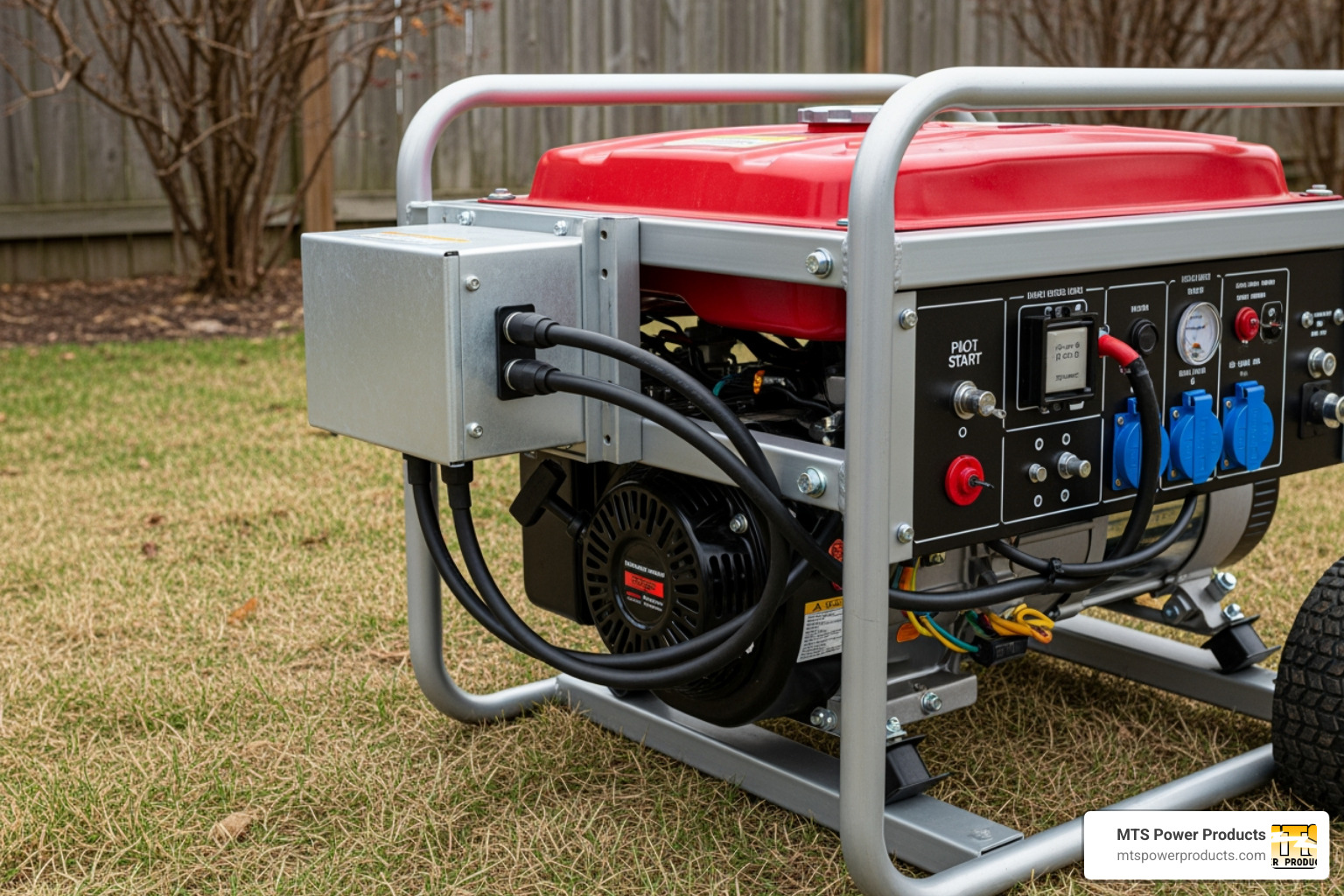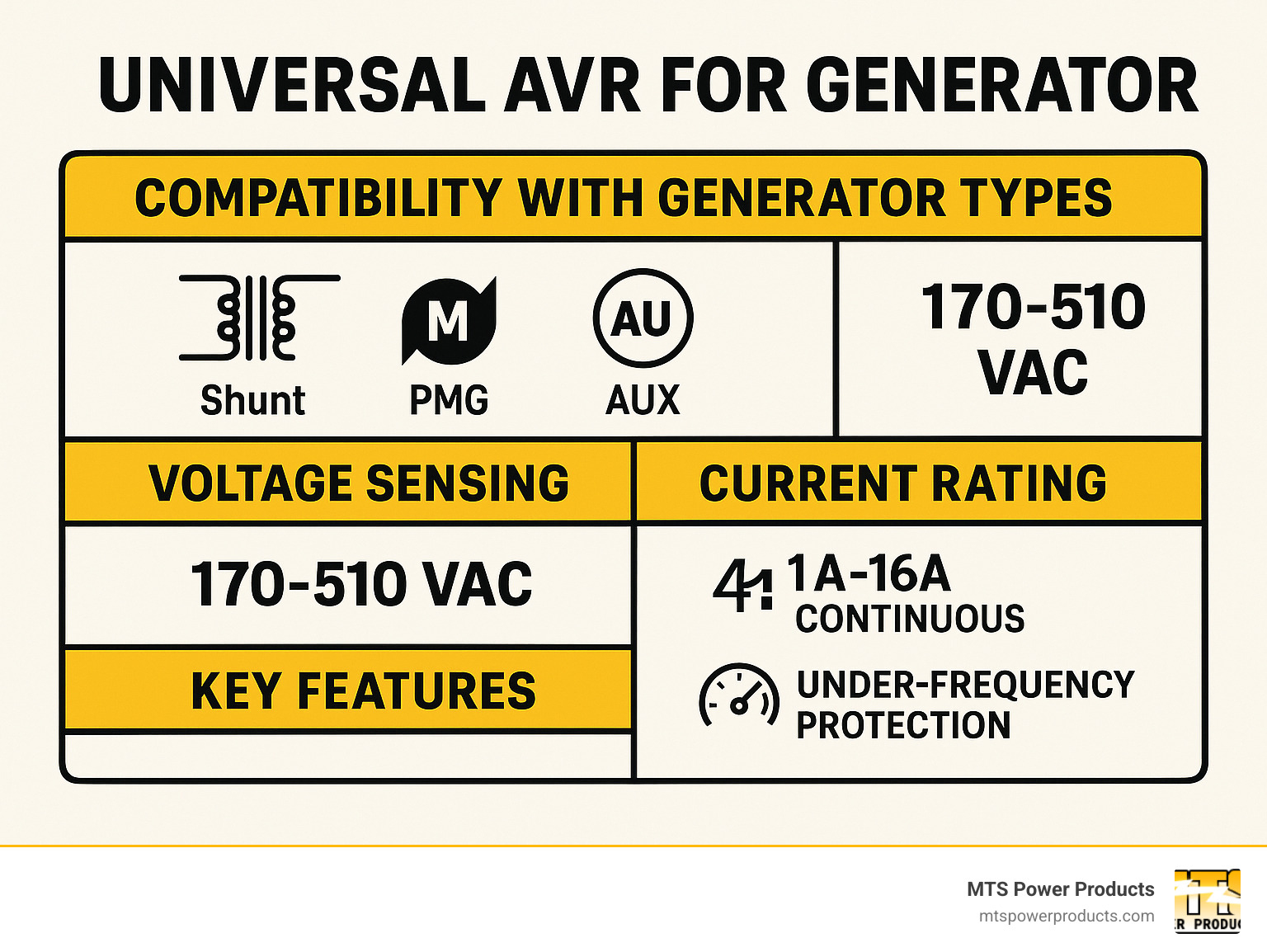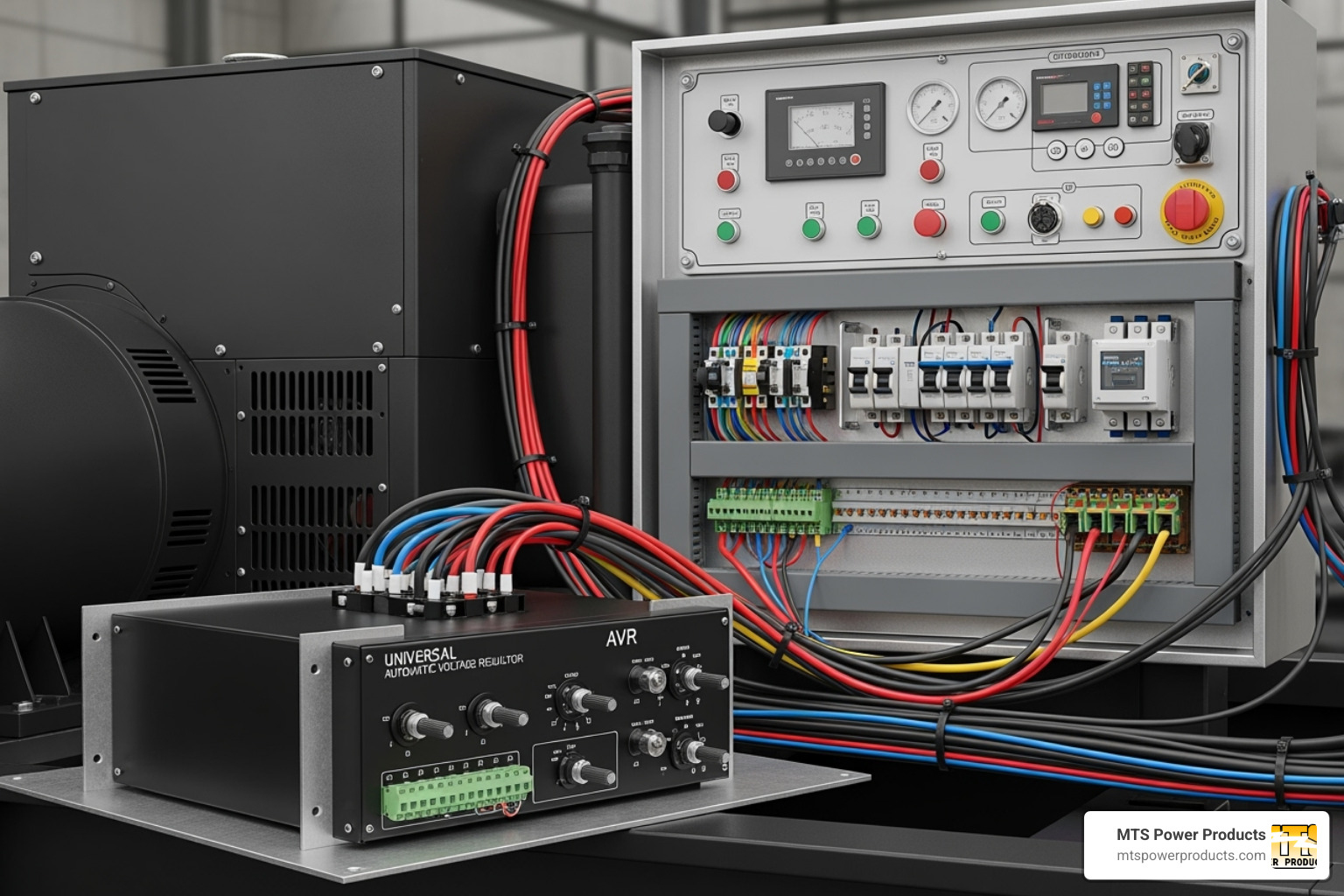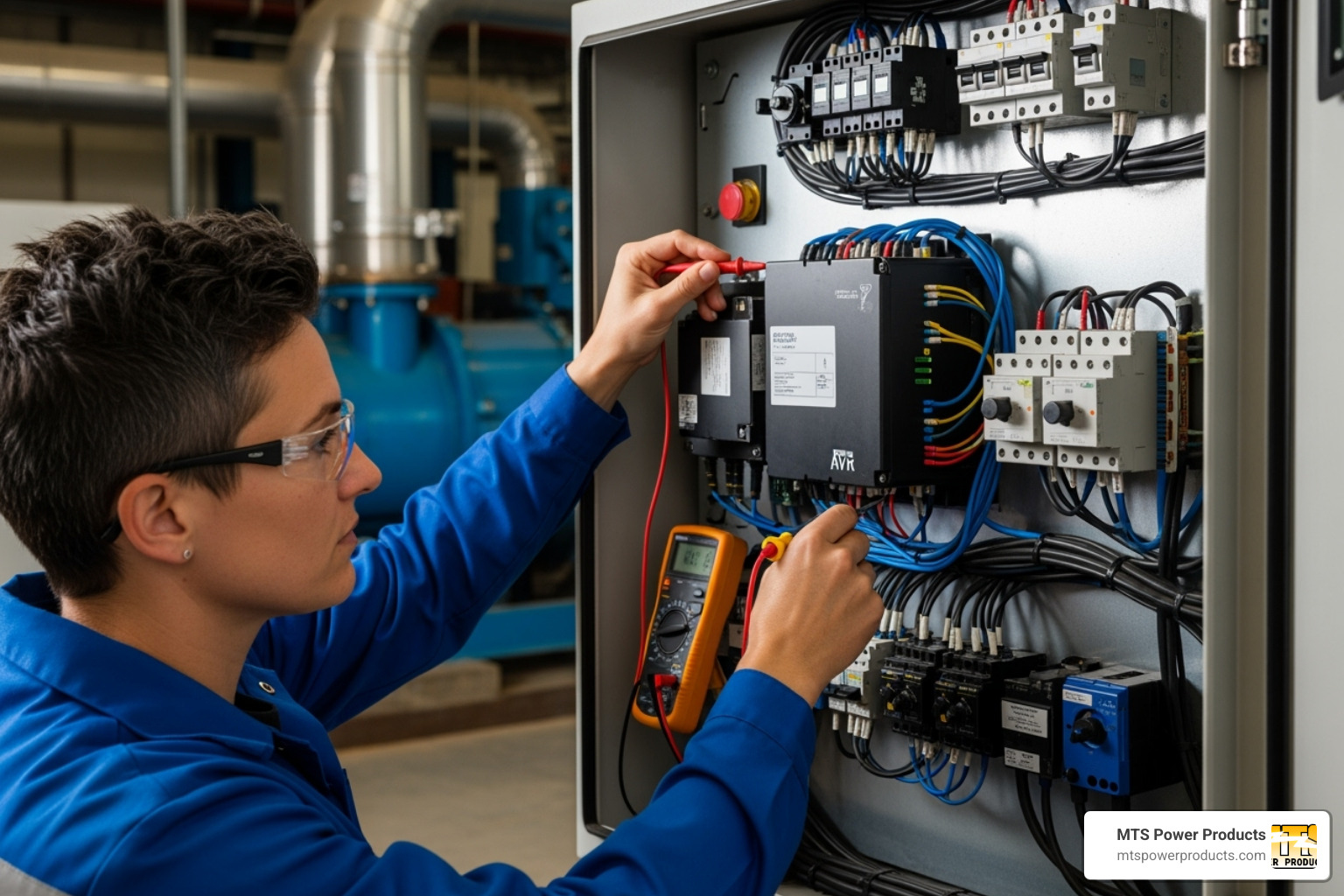
Buy Direct
from the Manufacturer
Sell our Products
Become a Distributor
Discounts
on volume purchases
Visit Us
at our Miami office
from the Manufacturer
Become a Distributor
on volume purchases
at our Miami office
A universal avr for generator system provides automatic voltage regulation for multiple generator brands and models. It’s a cost-effective replacement that ensures stable power output, protecting your equipment from damage caused by load changes or temperature variations.
When your generator’s original voltage regulator fails, a universal AVR is a smart alternative to expensive, hard-to-find OEM parts. They solve critical problems for generator owners, including equipment damage from voltage spikes, costly downtime, and budget constraints.
Key Benefits of a Universal AVR:
These devices use solid-state electronics to automatically adjust the generator’s excitation current, keeping the output voltage steady within ±0.5% accuracy. Whether you’re managing a business or preparing your South Florida home for hurricane season, a universal AVR can save you money and headaches.

Key universal avr for generator vocabulary:
An Automatic Voltage Regulator (AVR) is a solid-state electronic device that acts as a guardian for your generator’s electrical output. It prevents the flickering lights, unexpected shutdowns, and potential damage to electronics that occur when a generator’s voltage is unstable.
The AVR works by constantly monitoring the generator’s voltage output. If it detects a drop or spike—caused by starting an air conditioner or turning off a heavy load—it instantly adjusts the excitation current flowing to the generator’s rotor. By precisely controlling the magnetic field strength, the AVR maintains the output voltage with remarkable accuracy, typically within ±0.5%.
This technology is vital for all types of generators, from residential and marine units to industrial systems powering critical manufacturing processes. For a deeper dive, see our guide on Voltage Regulators Explained: The Key to Consistent Power.

A quality AVR is insurance for everything plugged into your generator. The key benefits include:
Learn more about how AVRs improve performance in our article on What Are Voltage Regulators in Generators?.
A universal avr for generator is essential across many applications where reliable power is non-negotiable:
For more on these applications, visit our resource on Automatic Voltage Regulator for Generators.

When your generator’s voltage regulator fails, waiting for an expensive, backordered original part is not your only option. A universal avr for generator system is the hero in this scenario.
A universal AVR is the Swiss Army knife of voltage regulation. It’s engineered with flexible specifications to work with multiple generator brands and models. With adjustable settings and flexible wiring, it can adapt to different generator excitation systems, whether shunt, PMG, or auxiliary winding.
This aftermarket approach means you are no longer tied to a single manufacturer. You gain access to readily available, cost-effective solutions that get your generator running again quickly. For more technical details, see our guide on Automatic Voltage Regulation for Generators.
Choosing between a universal and an OEM AVR involves a trade-off between a versatile tool and a specialized one. Here’s a comparison:
| Feature | Universal AVR | OEM AVR |
|---|---|---|
| Cost | Generally more affordable | Often more expensive |
| Availability | Widely available from various suppliers | May be limited to specific channels |
| Compatibility | Designed for broad compatibility | Custom-designed for a specific model |
| Features | Can offer advanced features; may require tuning | Exact match to original features |
| Installation | Straightforward; may need minor adjustments | Direct fit; often plug-and-play |
| Warranty | Varies by manufacturer, usually 1 year | Covered by generator’s original warranty |
OEM AVRs are a perfect fit but often come with a high price tag and long wait times. Universal AVRs offer flexibility, wider availability, and significant cost-effectiveness. Many universal models are even built to higher standards than original parts, incorporating newer technology and improved features. Explore your options at our Shop for Universal AVRs and OEM Replacements.
Yes, for most generator owners, a universal avr for generator replacement is the smartest move.
When should you stick with an OEM part?
For the vast majority of applications, a quality universal AVR delivers the ideal balance of performance, availability, and price. Find the right match in our Automatic Voltage Regulator Generator collection.
Selecting the perfect universal avr for generator is about matching the device to your generator’s specific characteristics. Once you know what to look for, the process is straightforward.
First, identify your generator type. Most modern generators are brushless, which is what universal AVRs are designed for. They work with AC brushless generators using fundamental wave, harmonic compound excitation, or PMG systems. If you have an older, brushed generator, you’ll need to check compatibility carefully.
Next, consider your power rating (kW) and phase type (single-phase or three-phase). These details determine the AVR’s required output and sensing input. Many universal AVRs feature single-phase sensing, which covers most residential and small commercial generators. For a comprehensive selection, explore our Find the Highest Quality Voltage Regulators collection.
When shopping for a universal avr for generator, the technical specifications are critical. Here’s what to look for:
Other valuable features include over-excitation protection and parallel operation capability for multi-generator setups. See these features in action in our Product Tag: Universale AVR collection.
Your generator manual is the best source for the specifications you need to match. The most important factor is the excitation type:
Once you confirm the excitation type, voltage, and phase, you must select an AVR with a sufficient current rating for your generator’s kVA rating. When in doubt, consulting a generator technician is a wise choice.
The price for a universal avr for generator varies based on features and capacity, but quality options are available for any budget.
Factors like brand reputation, advanced features, and current rating influence the price. While the cheapest option isn’t always best, you can find great deals on quality units on our Automatic Voltage Regulator Sale page.
Installing a universal avr for generator is more straightforward than you might think. With basic electrical knowledge and proper safety precautions, you can upgrade your generator’s brain for smoother operation.

Safety First: Before starting, always disconnect all power. Shut down the generator, disconnect loads, and remove the spark plug wire to prevent accidental startups.
Installation Steps:
For detailed testing procedures, see our Generator Voltage Regulator Test Guide.
Once the universal avr for generator is installed, it’s time to fine-tune it.
Start the generator and let it stabilize. Using a reliable multimeter, measure the voltage at the outlets. Locate the VOLT adjustment potentiometer on the AVR and make small adjustments with a screwdriver until you reach the desired voltage (e.g., 120V/240V). If your voltage is unstable or “hunting,” use the STAB (stability) adjustment to smooth it out. A quality AVR should maintain steady voltage within ±0.5% under varying loads. For more guidance, this external resource is helpful: Learn how to adjust generator voltage.
Even the best AVR can have issues. Here are solutions to common problems:
AVR failure symptoms include a complete loss of power, erratic voltage, or a burning smell from the alternator area. If you suspect a failure, find replacement parts in our Generator Voltage Regulators collection.
Here are answers to the most common questions we receive about universal avr for generator systems.
Usually, yes. Most universal avr for generator models are designed for AC brushless generators, which includes the majority of modern portable and standby units. However, there are exceptions:
The key is to identify your generator’s regulation system. For more insights, a helpful forum discussion on this topic is available where owners share experiences.
A failing AVR typically shows clear warning signs. Look for these symptoms:
To diagnose, visually inspect the AVR for burnt components or melted wires. A burning smell is a definitive sign of failure. While you can perform basic multimeter tests, a common diagnostic is to “flash” the field windings with a 12V battery. If the generator produces voltage afterward, the AVR is likely faulty. For safe, step-by-step instructions, consult our Generator Voltage Regulator Test Guide.
Using a mismatched universal avr for generator can lead to serious problems. The AVR is a precision component, and an incorrect one can cause:
To avoid these issues, always verify that the AVR’s sensing voltage, power input, output current, and excitation type match your generator’s specifications. For help selecting the correct unit, visit our Voltage Regulator for Generators section.
Universal AVRs are the unsung heroes of reliable power, ensuring your generator delivers the consistent, stable electricity needed to protect your valuable equipment. Their key advantages are versatility and cost-effectiveness, offering a readily available and affordable alternative to expensive OEM parts.
However, correct selection and installation are essential. Matching the AVR’s specifications to your generator’s requirements is the only way to guarantee safe, reliable performance. A mismatch can lead to unstable power or even serious equipment damage.
At MTS Power Products, we provide the professional-quality generator parts that deliver peace of mind. As a direct source for components, including our own customized McPherson Controls line, we offer robust solutions with advanced features for improved control and safety. Located in Miami and shipping worldwide, we have the expertise and inventory to get you the right part quickly.
When your power matters, trust the experts. Find the perfect generator voltage regulator for your needs and experience the MTS Power Products difference today!
